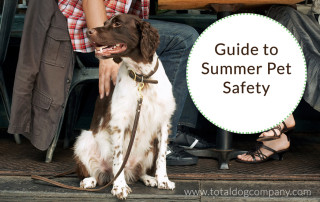Protecting Your Pup: Summertime Pool and Lake Precautions
In the land of 10,000 lakes, there is a risk that comes with the traditional Minnesotan R & R on the water. With some of the hottest recorded years in the books already and a warm start to 2016, toxic blooms of blue-green algae present a danger for your dog. We’re here to prepare you and your pet by talking about the potential water dangers your dog may encounter this summer. What is Blue-Green Algae? Blue-green algae, or Cyanobacteria, is a type of algae that grows in bodies of freshwater all around the world, including Minnesota. Algae are microscopic organisms that can produce toxins if grown with the right ingredients of heat and fertilizer—toxins that are especially dangerous for pets. Found in nutrient-rich areas in the steamy summer months, a blue-green algae “bloom” can look like blue and green paint on the surface of the water, and/or a light green layer on the surface and shorelines. (see this website for some photos of what is and isn’t blue-green algae: http://www.dec.ny.gov/chemical/81962.html ) Blue-green algae blooms are common in Minnesota and pose a very real danger to both people and animals that swim in, or consume water contaminated with it. Although not every bloom of blue-green algae is toxic, the best choice is to steer clear of areas that host this potential poison. Hot weather and lakes/ponds with fertilizer run off are breeding grounds for this type of bacteria. Signs and Symptoms of Blue-Green Algae Exposure: There are two types of toxins that can be produced by blue-green algae and they cause different effects: liver failure and neurological damage. Physical symptoms of one or both include: Vomiting Diarrhea Bloody or black stool Pale mucus membranes Blue mucus [...]

